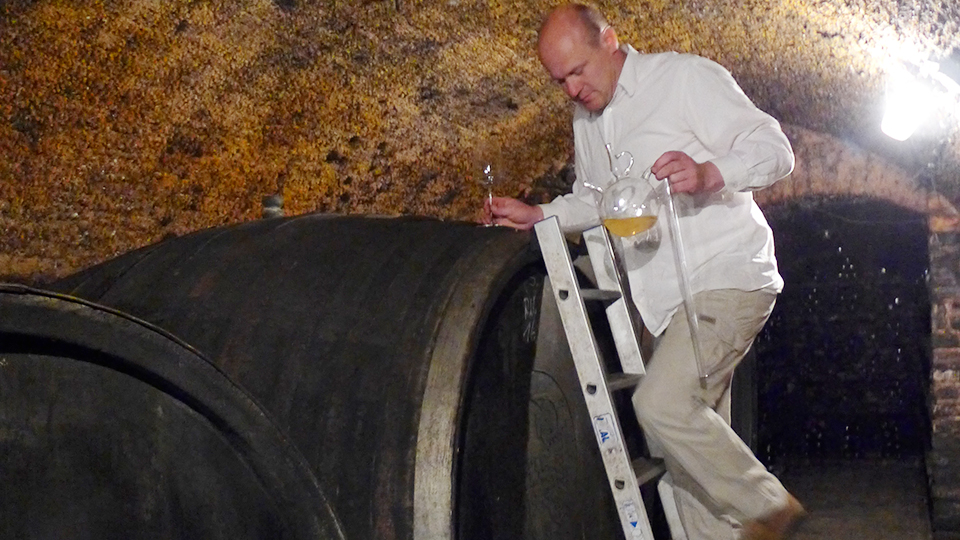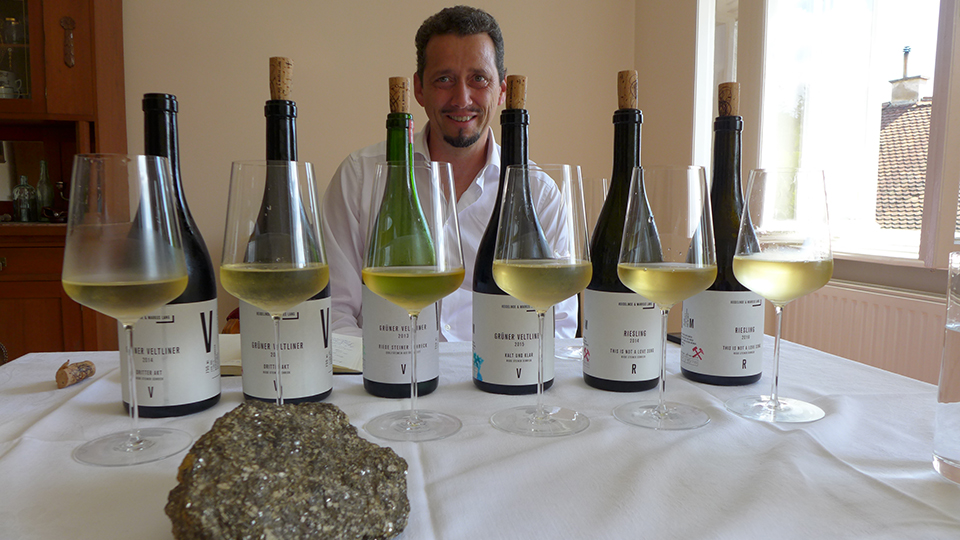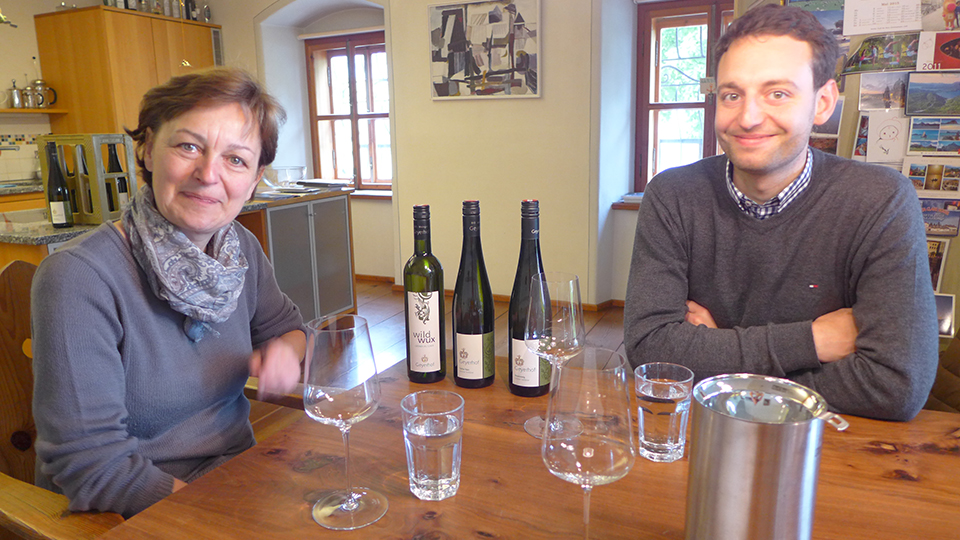Browse using the new Vinous website now. Launch →
Printed by, and for the sole use of . All rights reserved © 2015 Vinous Media
Austrian Riesling & Grüner Veltliner: Up to the Challenges of 2016
BY DAVID SCHILDKNECHT | OCTOBER 4, 2018
Part One: Kremstal, Traisental, Wagram, Wien
A growing season that presented enormous challenges also harbored opportunities, on which Austria’s top practitioners of Grüner Veltliner and Riesling capitalized to make sleek, invitingly fragrant wines of intricacy, charm and alcoholic moderation. The best are often more exciting than their 2015 counterparts.
Lower Austria was significantly affected by Europe’s multi-day deep freeze at the end of April, 2016, which for some estates already rendered anything approaching a normal-sized crop impossible. Seemingly never-ending rain in spring and early summer occasioned unprecedented pressure from peronospora (downy mildew) in many sectors. This nearly omnipresent feature of vintage 2016 in Northern Europe wreaked selective havoc on the flowering, thereby further reducing yields. The effects of localized summer hail can’t be omitted.

Stein's stony terraced vineyards - here, Hund and Grillenparz in foreground; Gaisberg and Pfaffenberg in background, as seen from Schreck - are experiencing a renaissance; Fifteen years ago, only the Knolls and Salomons showcased their potential; today, no lover of Grüner Veltliner or Riesling should overlook Harmwein, H.-M. Lang, Stadt Krems, Lesehof Stagård or Rainer Wess
But considering the nearly catastrophic shortfalls experienced in other parts of their country, Lower Austria’s Grüner Veltliner and Riesling growers were lucky, with some even managing to enjoy average yields. Moreover, in late July, the weather turned – albeit less dramatically than in Germany’s Riesling-growing regions. And “less dramatic” actually meant more favorably. Lower Austria, while warm, dry and sun-drenched from late July through late September, experienced somewhat less late-summer drought stress and sunburn than did German Riesling regions. A disadvantage vis-à-vis Germany was additional autumn precipitation, especially in mid-October. Still, botrytis seldom proved problematic thanks to chilly post-September temperatures. For the most part growers were able to take unhurried advantage of clear, cool conditions, although low yields along with precisely that cooperative weather meant many were finished harvesting well before October’s end.
A Varied Landscape
It is easy – and usually not all that misleading – to think of the Wachau, Kremstal, Kamptal, Traisental and Wagram as a single “Krems Area” growing region. All of these regions are characterized by a consistent daily alternation of warm air from the Pannonian Plain with cool breezes from pre-Alpine forests. Together, these flow up and down the Danube, with conditions being warmer, generally speaking, the farther east one travels. What’s more, the soils of all but the Traisental are dominated by some combination of loess (ancient glacial dust) and “primordial rock” (collectively referred to by the locals as Urgestein) of volcanic or metamorphic origin, with loess becoming increasingly dominant as one moves east from Krems and Langenlois. (The western Weinviertel and the vineyards of Vienna are also typically either loess- or Urgestein-based, but are climatically quite distinct.)
Notwithstanding these shared characteristics, the meteorological challenges of 2016 had varying effects within each of these regions. The coolest sectors – notably the Wachau’s westerly Spitzer Graben, where many growers suffered near-total losses – were hit hardest by frost. Generally speaking, the further east one travels, the less the impact of frost (which in the Wagram and Wien was minimal). Excessive spring and early summer rainfall was a constant, but just how much rain fell differed significantly from one sector to another. Both loess and Urgestein soils tend to be fast-draining; but ventilation, elevation and inclination often spelled a critical difference not only in how badly one’s vines were hit by peronospora during the rainy season but also in whether one could even reach one’s vineyards with sprays in time to stave off the worst.

Lower Austria's two classic vineyard underpinnings - loess (yellowish glacial dust) and Urgestein ("Primordial Rock," principally gneiss, mica schist and granite) - touch one another at Markus Lang's new site high up in a forgotten portion of Stein's Braunsdorf sector
Unsurprisingly given the nature of 2016’s threats, the vigilance, diligence and viticultural intuitions of the individual grower played a decisive role in his or her eventual yields. In matters of quality, vine stamina – which is highly dependent on age and genetics – was probably almost as important as human talent and terroir, because extended excessive rainfall followed by heat and drought is a shock to vine metabolism. The aforementioned factors having been duly noted, 2016 is nevertheless not like 2014, 2010 or, in its very different way, 2011, all vintages in which there were enormous qualitative discrepancies, and in which inattentive, ill-prepared or just plain unlucky growers were punished with conspicuously deficient quality. In 2016, infant grape clusters that made it through the early summer unscathed stood an excellent chance of becoming – at a minimum – appealing wine. And even where buds were killed by the April frost, the secondary buds, provided they successfully ran the gauntlet of peronospora, frequently formed the basis for eventual ripe fruit, thanks to the opportunity offered by autumn 2016 for a protracted harvest.
2016 in One Word
A single descriptor I heard from one grower after another and found myself using again and again pretty much sums up the 2016 vintage in Austria’s Grüner Veltliner and Riesling growing belt – not just as regards the course of the growing season but also the character of its wines. And that is the German word spannend. It certainly fits the growing season: tense and suspenseful, leaving growers at mid-summer fearing with good reason that 2016 might prove catastrophic. But spannend also means fascinating and exciting, which is how the best wines have turned out. More specifically and literally, spannend means exhibiting tension, and that arguably fits the often taut structure, the fine phenolics and acidity, as well as the animating flavor interplay found in the top 2016s, all features that prove entirely compatible with wines of buoyancy, immediate charm, and silky or even subtly creamy texture. With few exceptions, the 2016s aren’t lush or powerful. Nor must one resort to superlatives in assessing how they look on paper: they are, for instance, not as extreme in acidity, low in must weight or off-the-charts in dry extract as their 2014 counterparts. But they are in organoleptic respects much closer kin to 2014 than to 2015 (and to 2010 than to 2011 or 2012). This is a vintage in which Grüner Veltliner frequently displays a Riesling-like combination of animation and brightness, and in which shared vineyard attributes sometimes trump varietal identity.
As I have often had occasion to emphasize, the challenges of any given vintage and especially anything in the course of its growing season that truly vexed growers almost inevitably, but unjustifiably, figure into the evaluations of critics and the numerical ratings that appear in vintage charts. Sometimes – as witness 2014 – a vintage’s challenges can turn out to have been a source of strength. At the very least, I find no reason to quibble with Michael Malat’s assessment that “while 2016 is the more challenging vintage of the two, I think that 2015 and 2016 will eventually end up being thought of by growers as qualitatively on a par.” Michael Moosbrugger went so far as to pronounce 2016 superior to 2015. “But it will take a few years,” he predicted, “for tasters to arrive at that verdict.”

Wagram vintner Toni Söllner draws from his oldest cask (with a great back story) a sample of 2016 "Irden," one of increasingly many exciting Austrian experiments in skin-fermented "whites"
In This Report
This two-part report is based on visits with 56 growers in September of 2017, as well as on extensive additional tasting and retasting between then and September of 2018. Those subsequent tastings included selected wines – albeit not complete collections – from 23 additional growers, 17 of whose wines merited selective publication of tasting notes. Part Two will cover the Kamptal, Wachau and Weinviertel. Following Vinous practice, notes on any wines – of which there are very few – that were last tasted from tank or cask are accompanied by point ranges rather than by a single numerical score. As usual, notes on wines that I thought justified a rating of lower than 87 points are published only in instances where they nevertheless represent good value, or where I thought it important to publicize my concerns about a particular bottling.
Explanations (sigh!) are once again in order regarding labeling conventions as well as the conventions that govern wine nomenclature in my reports. Austrian laws are undergoing some significant changes, among which is that wines labeled for an officially delimited vineyard of origin will soon have to precede their names with the word “Ried,” to emphasize that what follows is a genuine vineyard name rather than a vaguely geographic or site-evocative fantasy name. (Until now, use of “Ried” on labels has been optional, and in fact rare.) At the same time, the authorities are cracking down on fantasy names that have any geographical or even topographical allusions unless these are verifiable. So, for instance, if the word “Terrassen” appears in the name of a cuvée, growers must be able to demonstrate that the vine rows are really terraced. Thus, quite a few traditional wine names will be at least subtly altered, and the likelihood of confusion between fantasy names and site names will be greatly reduced even without resort to the use of “Ried.” That reduced risk is one reason why I plan to omit that technical term “Ried” from the wine descriptions utilized in Vinous. Another reason is my continued attempt to keep German-language wine names from becoming almost ludicrously long. Imagine, for instance, if instead of identifying a wine as “Riesling Heiligenstein” I included the aggregate detail authorized by Austrian law and advocated by the Traditionsweingüter organization. Instead of a two-word description, you would then be reading: “Riesling Ried Heiligenstein Zöbing Erste Lage Kamptal DAC Reserve.” (Actually, the Traditionsweingüter would like to see “Riesling” come last in that list, but I won’t even begin to argue issues of word order!)

Markus Lang's first five vintages from the steep Steiner Schreck (sample in foreground) are as strikingly innovative as his vine management, harvest strategy, press and cellar - prime exhibits in the case for Austria's increasingly exciting viticultural diversity
Another change in Austrian law – and one with which I can certainly sympathize – is that vineyard names will henceforth have to appear in conjunction with the relevant village or communal name. As with use of the term “Ried,” reference to the relevant village has until now been optional – and in fact has seldom appeared – on labels of vineyard-designated wines. I have for that reason made the omission of village names the default convention at Vinous. (Ironically, I treat the formula village + vineyard—e.g., “Piesporter Goldtröpfchen” – as the default in my Vinous reports on German wine, yet the German VDP growers’ organization nowadays encourages its members to drop references to the relevant village from their presentation labels. Makes them look like Burgundy grand crus, don’t you know.) Granted, no labeling practice or convention of nomenclature is perfect. When it comes to Austria, even site designations that are paired with communal names can occasionally mislead. If one sees the vineyard name “Gaisberg” in reference to a wine of the Kamptal, for instance, one would be correct in supposing that this refers in every instance to the same geographical entity (albeit with slight geological variations). But since the Gaisberg is shared among three adjacent communes – Strass, Kammern and Zöbing – it will in the future be treated as referring to three different Rieden. On the other hand, if you see a reference to “Gaisberg” in connection with the Kremstal, that could refer to either of two radically different vineyards on opposite sides of the Danube, one of which will now properly be referred to as “Angerer [Ried] Gaisberg” and the other as “Steiner [Ried] Gaisberg.”

By giving their Geyerhof wines increasingly long élevage and late release, Ilse and son Josef Maier are in the vanguard of a trend remarkable in a country that until recently had a justified reputation for vinous "infanticide"
With my report on the 2017 vintage – the first from which growers will be required to conform to the aforementioned new regulations – I will probably begin indicating the village of origin as part of each single-vineyard wine. In the present report, I have sometimes referenced the relevant village either in my grower introduction or as part of my tasting note, but only in instances where I thought this would eliminate some ambiguity. (And as always, each wine’s village of origin is incorporated into the Vinous database.)
Growers Covered in Part One of This Report, by Region:
You Might Also Enjoy
Rheingau and Mittelrhein Riesling 2016: Stress Test, David Schildknecht, July 2018
Pfalz Riesling 2016: Restraint Rewarded, David Schildknecht, June 2018
Saar & Ruwer: Beauties Despite a Bumpy 2016, David Schildknecht, April 2018
Vintage Report – Drama in Three Acts: 2016 in Germany and Austria, David Schildknecht, September 2017
Vintage Preview – 2017 in Austria and Germany: Hanging in the Balance, David Schildknecht, September 2017
Austria’s 2015 Rieslings and Grüner Veltliners: Ripe and Ready, David Schildknecht, February 2017
Show all the wines (sorted by score)
- Bernhard Ott
- Buchegger
- Christ
- Edlmoser
- Erich Berger
- Fritz Salomon - Gut Oberstockstall
- Geyerhof
- Hajszan Neumann
- HarmWein
- HM Lang
- Josef Ehmoser
- Josef Schmid
- Jutta Ambrositsch
- Lesehof Stagård
- Leth
- Malat
- Mantlerhof
- Markus Huber
- Martin Diwald
- Neumayer
- Nigl
- Petra Unger
- Proidl
- Rainer Wess
- Salomon – Undhof
- Sepp Moser
- Soellner
- Stadt Krems
- Stift Göttweig
- Tom Dockner
- Türk
- Walter
- Weinberghof Fritsch
- Wieninger
